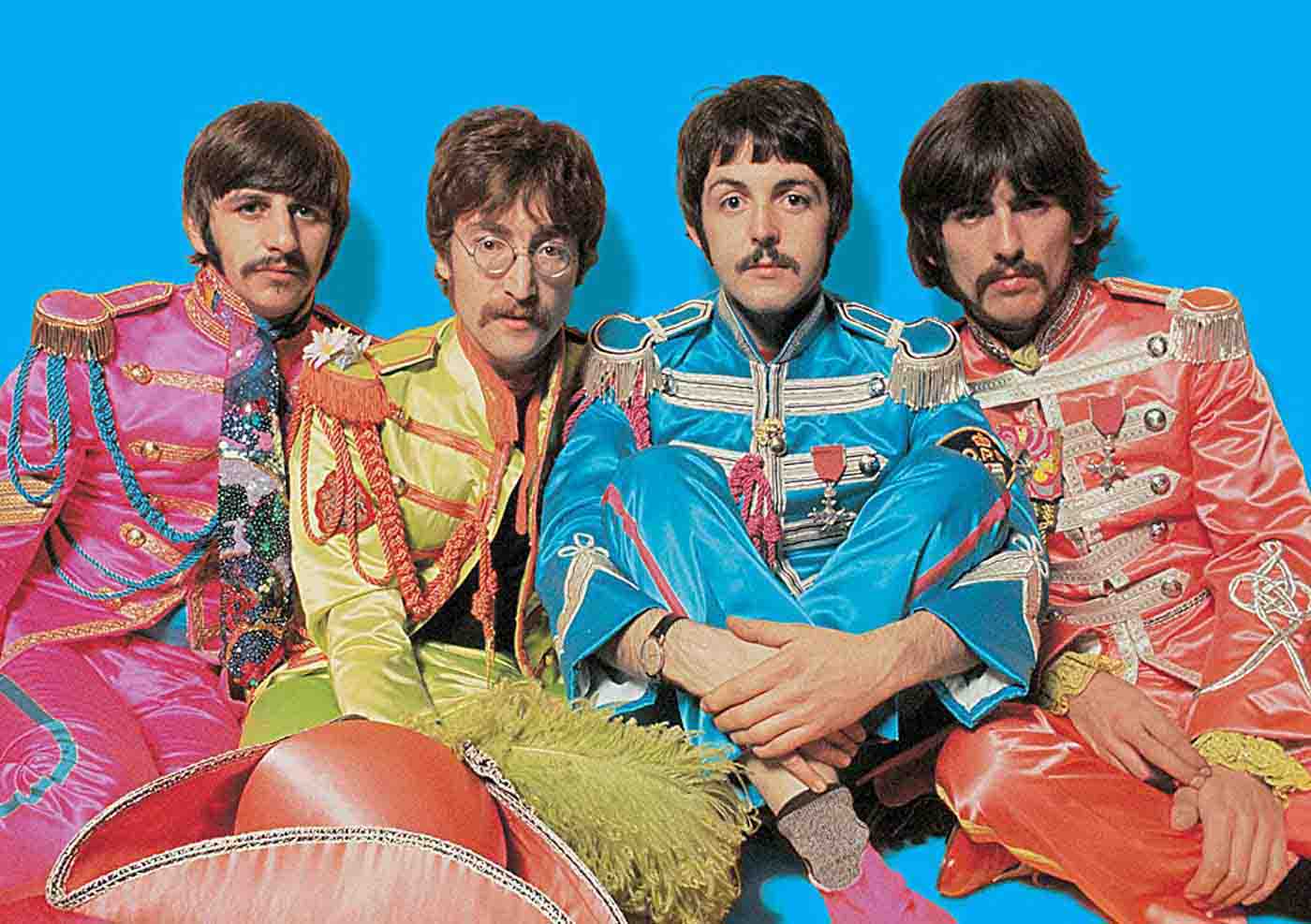Clients come to us and they explain to us how they intend to be the “best” at whatever.
The best charter company.
The best avionics company.
The best APU repair company.
You get the idea.
And I have no doubt in my mind that their intentions are to be such. I have no doubt you’ve told yourself and your staff similar statements. All these mission statements and vision statements of sillyness. They all read the same “We’re going to be the best blah blah blah blah corporate speak blah blah.”
Fine. I’ll take at face value the claim that all these leaders and entrepreneurs want to be “the best” at whatever it is they’re doing.
If that is in fact true, then I have a bit of advice for you:
Stop trying to fit in. Stand out.
(That’s what we did. If there was some doubt – read our story.)
The “art” (and instinct) of Imitation
You’ve no doubt heard the phrase “imitation is the sincerest form of flattery.”
It’s a lie. We imitate not because we flatter anyone, but because we’re lazy and largely cowards. Winners stand out.
Imitation is a human skill that has largely propelled us to the top of the power chain on the planet. We imitate what we see that works. We do so largely for two reasons, one: our brains are energy hungry hogs so anything that can create as shortcut is largely welcomed; two: the vast majority of us aren’t particularly creative, and thus, if we can find something that works that lessens the likelihood that we are going to be embarrassed for accepting risk.
Most of the time, we’re not even aware we’re imitating what we see. The desire to fit in so strong, it compels us to do things and think in ways that can be crippling in our lives and in our businesses.
Not all imitation is bad. Imitating the processes of successful people can often generate the same success for others.
But most of the imitation that is done isn’t about imitating process or strategy, it’s straight up copying, and that can lead to results that are less than inspiring.
Let me show you something that you might find… well… painful (because reality is rough).
Here are three ads on charter. You all know the brands (and showing them is not meant in any way to imply endorsement – they have no idea I’m evaluating their ads. If you are from one of these companies, I have no doubt you’ll be offended by my criticism. Bear with me for a moment.)



Nicholas Air, Jet Aviation, and Executive Jet Management. All of these are professionally produced and reasonably well shot and copywritten ads.
You could take their logos and switch them from ad to ad and it wouldn’t matter at all – would it?
You know these ads – and ads like them. Hi, we’re a charter company, so here’s our ad… usually a picture of a plane on it and some guy smiling as a captain and super attractive women and some 50 year old manicured guy getting off the plane. Aren’t we grand?
This is imitation to the level of oblivion. Nobody sees these ads because “blah blah blah for all your jet needs here’s yet another ad, just like the last one you saw 22 years ago, that you’ll ignore now.”
It’s silly. I could design one of these ads after 9 martinis and being worked over by the bouncer. They’re uninspired and they’re ineffective.
But the desire to fit in is super strong.
Let me show you what “not fitting in” gets you in a medium you’re probably less emotionally attached to (and more familiar with) – music. I use music because one – all of you have heard these songs, and two – the market dynamic is exceptionally similar. In aviation you’re in a complex field with lots of competitors who make almost the same product, you’re all vying for attention, and the vast majority of you are relatively unknown.
Believe it or not, that is the market dynamic of popular music. All you ever see are the ones who stand out.
I saw her Standing There (and thank God they did, or we’d never have heard of you.)
So last year’s big comedy hit was the movie Yesterday.
The premise is pretty simple – a freak occurrence means that our protagonist is the only person who knows the Beatles hit tracks. So, he rockets to stardom introducing the world to the Fab Four’s biggest hits around.
It got me thinking. If by some weird event that happened, would the Beatles songs really be that popular? Is it the “creation” itself that is really the magic spark. Is there something magical about “Sgt. Pepper” and “Yellow Submarine” that time immemorial would have rung true if the Beatles hadn’t introduced those tunes? Would the Mellotron have been a thing without Strawberry Fields?
I don’t think so. Because by 2017, the revolution that someone else would have launched (since the Beatles didn’t exist) would have changed music anyways. The Beatles would have been yet another rock band, and so their songs, while perhaps novel, would not have had the same impact.
Think I’m crazy? Watch this:
https://www.youtube.com/watch?v=TTMlZxHk938
Absolutely awful isn’t it? Same “Fab Four” but they’re busy “fitting in” doing other people’s songs.
I came across this “gem” researching this piece for you. It’s absolutely stunning. They sound like crap.
Are they somehow not the “Fab Four” anymore? No. And if anything they were better than “The Beatles” because they had Pete Best as their drummer (who was more talented than Ringo).
But they were fitting in. So they sounded like crap.
Despite sounding like crap, they were talented enough that they found some degree of success, establishing themselves as a band.
Thankfully, Decca rejected them. When they signed with EMI/Parlophone, their manager had their chance to finally push the songs they had been writing. Their break through: I Saw Her Standing There.
Beatlesmania started rolling down like a snowball down the hill. By the time it reached the bottom – it looked to everyone else to be inevitable. It was in fact a combination of luck, risk, talent, but more than anything, deciding to actually do something different and see how the market reacted.
It changed music forever.
All of the songs on Please Please Me were all songs they had written, performed, and made popular through their energy and voice.
Given what was the “standard” at the time – it was unlike anything else in the marketplace.
By the time “Help” came around, the Beatles’ style and sound was more than established (but the same energy and style):
Were there bands that tried to do the Beatles (copy them)? Sure. The one that comes to mind for me was Cheap Trick:
https://www.youtube.com/watch?v=BJs_L7yq5qE
Cheap Trick were nowhere as successful as the Beatles (granted, they were successful).
Mess Around
For me, the ultimate depiction of what I’m talking about was in the movie “Ray,” a biopic about Ray Charles, and his breakthrough hit, “The Mess Around”:
It’s epic. When the line, “Nobody wants another Nat King Cole,” comes out. That’s the honest truth.
How accurate is this scene? It’s probably accurate enough (from the reading I’ve done). But I have no doubt there is some Hollywood flair to it for effect.
But it illustrates my point about standing out beautifully.
That’s what so many of you in this industry want to be – another “Nat King Cole,” and just fit in. You want to out do the popular one at being the popular one. It’s just not going to happen. Ray Charles was perhaps the most talented blues pianist there ever was (I think at least the argument can be made), but he would have never been popular as another Nat King Cole, or even another Pete Johnson.
What you’re depriving the market by not striving to be unique is your “Mess Around,” and all the success that comes along with that. Mess Around didn’t make the top 100 in 1953. But Ray Charles next breakthrough hit would be “It should have been Me” in 1954 (same style):
Ray Charles had 86 hits on the chart, including 11 chart-toppers, with “I Can’t Stop Loving You” earning his longest reign at the top (10 weeks). The irony of that, he was one of the first Hip Hop/R&B artists to use an orchestra, something the Beatles wouldn’t do until 1965 with “Yesterday“.
Even the best copy – but they copy from the best – and they copy the strategy, not the style.
Ray Charles would hit the top 10 in 1955 with a song that was part R&B, part Gospel, and all Ray Charles. It would define his style the rest of his career.
It didn’t sound like anybody else in 1955.
The One Hit Wonder v. The Bands We Remember
There are lots of great songs in music from bands that never went anywhere. We call them “one hit wonders.” Those songs typically are the “best” of a given type of artist.
But just like a lightning strike isn’t a great electricity generation strategy, one hit wonders flash and then disappear.
It’s not the music. Consider this, Ray Charles v. the Beatles for “Eleanor Rigby.”
The Beatles:
Ray Charles:
Same song, totally different vibe. Totally different results.
(by the way – the song was a top hit for both Ray Charles and for the Beatles)
These bands we “remember” had talent, but they also had a style they claimed as their own, even when they covered each other’s songs.
You have to claim some part of the market as yours. You have to stand out and not have a peer.
And when someone really does try to copy, everyone knows it. Consider the amount of criticism Michael Bublé got patterning himself after Frank Sinatra. Only when he finally developed his own “crooning” style did he finally establish himself as an artist. That said, he continues to be derided by many in music for being a Sinatra wannabe.
Stand Out.
I can do an avionics ad blindfolded. Show me the equipment, say it’s the best, put the logo in.
Done.
I can do a charter ad blindfolded. Picture of a plane, some hot girl, some debonaire guy, la la talk about service and time.
Done.
I can do a aerospace parts ad blindfolded. Picture of the part, black text white background, hackneyed pictures that don’t tell me anything, copy that lauds the specs, logo.
Done.
And I can go on like this for every sector in this space. There’s a whole lot of people saying nothing in the aviation/aerospace industry in their ads. Two reasons for that, one – the people in this industry that do these ads aren’t particularly talented (it’s part of the reason why we decided to enter), and two – those agencies don’t give their clients enough confidence or enough reason to tease out their voice and deliver their version of “the Mess Around.”
I’m begging you – literally – stop trying to fit in. None of you are the same. Every company I’ve ever talked to has a story, a rich story, in who they are and what they do.
That story is begging to be told. That story is why you have the clients you have. The values you embrace and the story you tell yourselves have determined how you got to where you are in the industry.
This is an industry rich in emotion. Rich in diversity. Rich in uniqueness.
But you would never know it to pick up a trade magazine or go to a trade show. Everybody’s the same.
Stand out.
No go out and shake a tail feather. It’s timeless.

